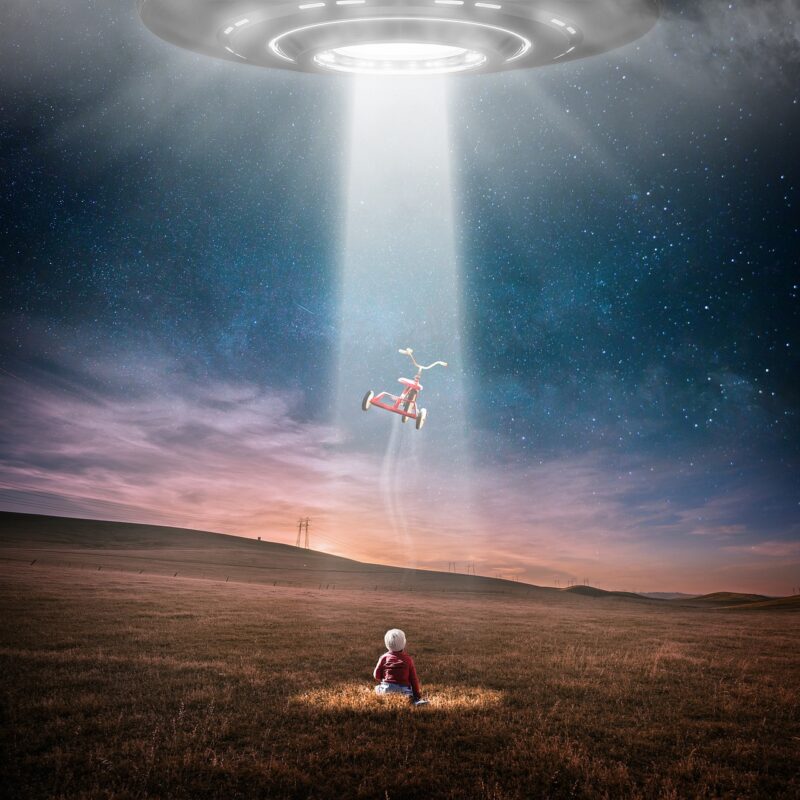Unraveling the Mystery of UFO Sightings: What’s the Truth?
November 17, 2024

UFOs, or Unidentified Flying Objects, have fascinated and perplexed humanity for decades. From ancient texts describing strange celestial occurrences to modern eyewitness accounts of alien craft, the topic has generated countless debates, theories, and conspiracies. In this article, we aim to unravel the mystery surrounding UFO sightings, providing a comprehensive analysis of what might really be taking place in our skies.
1. The History of UFO Sightings
The history of UFO sightings can be traced back to antiquity, with various cultures documenting sightings of unexplained aerial phenomena. Here are some notable historical accounts:
- Ancient Texts: In ancient scriptures, such as the Vedas from India and ancient Greek texts, there are references to celestial chariots and gods descending from the skies, which some interpret as early UFO sightings.
- The 1947 Roswell Incident: This infamous event further ignited public interest in UFOs, where a supposed military recovery of an alien spacecraft was reported. The U.S. government later claimed it was just a weather balloon, but skeptics believe the truth was hidden.
- Project Blue Book (1952-1969): Conducted by the U.S. Air Force, this investigative project analyzed thousands of UFO reports, aiming to determine which sightings were a national security threat and what could be explained through natural phenomena. The project concluded that most sightings remained unexplained or were due to misidentifications.
UFO sightings gained significant traction in the late 20th century, leading to a surge of interest in science fiction and the possibility of extraterrestrial life.
2. Common Types of UFO Sightings
UFO sightings are often categorized based on their appearance, behavior, and the contexts in which they occur. Below are some prevalent types of UFO sightings:
- Lights in the Sky: Many eyewitness accounts describe seeing bright, fast-moving lights that seem to hover or dart around in ways conventional aircraft cannot. These sightings can occur anywhere, often at night.
- Disc-Shaped Crafts: The classic flying saucer is an ever-popular image associated with UFOs. Observed as metallic disc shapes that glide silently, these craft are often reported to land and take off without sound.
- Triangular Objects: Numerous accounts feature large triangular ships with lights on each corner. These sightings are often reported near military bases, leading to speculations about advanced military technology.
Understanding these common types helps frame the context in which UFO sightings occur, lending insight into the phenomenon itself.
3. Scientific Explanations for UFO Sightings
While many UFO sightings remain unexplained, various scientific explanations have emerged to account for these phenomena. Some of the most common explanations include:
- Astronomical Objects: Many reported UFOs are later identified as natural celestial bodies such as planets, meteorites, or satellites. For instance, the planet Venus has often been mistaken for a UFO due to its brightness and position in the sky.
- Aircraft & Drones: The proliferation of advanced aircraft and drones makes it increasingly common for people to misidentify these flying machines as UFOs, especially in areas near military bases or cities.
- Psychological Phenomena: Perceptual illusions and suggestibility can lead individuals to misinterpret or exaggerate what they see. This includes the psychological impact of media coverage, which can shape expectations and perceptions of UFO sightings.
Scientific scrutiny often leads to dismissing many UFO sightings as explainable, but this does not quell public fascination or debate.
4. The Role of Government and the Military
Governments around the world have long been involved in studying and responding to UFO sightings, particularly due to national security concerns. The U.S. government’s involvement has garnered significant attention, especially following the release of classified information over the past few years:
- Unidentified Aerial Phenomena (UAP) Task Force: Formed in 2020, this initiative aims to review and analyze military encounters with unidentified aerial phenomena. Such reports have reignited public interest in the reality of UFOs and their implications for national security.
- Declassified Reports: In 2021, the Office of the Director of National Intelligence (ODNI) released a report on UAPs, acknowledging the existence of numerous unexplained incidents. The report emphasized the need for further investigation and analysis to understand these phenomena better.
The military’s interest in UFOs is often entwined with air safety and potential threats, causing some to speculate on the existence of extraterrestrial technology.
5. Public Perception of UFOs: Belief vs. Skepticism
The public perception of UFOs varies widely, with some individuals firmly believing in extraterrestrial life and others remaining skeptical. Several factors influence these viewpoints:
- Media Influence: Movies, television shows, and books play a significant role in shaping public perceptions of UFOs and aliens. Pop culture frequently depicts extraterrestrial life, which can influence beliefs and even reported sightings.
- Scientific Reputation: Skepticism often comes from the scientific community, where researchers advocate for empirical evidence and rigor. Hoaxes and misidentifications have led many to dismiss UFO sightings as unfounded claims without credible support.
- Cultural Beliefs: Cultural backgrounds and personal biases heavily influence individuals’ beliefs about UFOs. In some cultures, extraterrestrial life is accepted as a possibility, while others may view it as foolishness.
The division between believers and skeptics forms the basis for ongoing debates in society about the validity of UFO sightings.
6. The Future of UFO Research
UFO research is evolving with advancements in technology and increasing transparency from government entities. Here are some key areas where the future of UFO research may unfold:
- Advanced Sensing Technologies: The development of enhanced radar systems and aerial monitoring technologies allows researchers to collect more accurate data about UFO sightings. These advancements help distinguish between real phenomena and misidentifications.
- Public Engagement: As governments declassify more documents, public interest continues to grow. Citizen science initiatives may gather additional eyewitness reports, leading to a more data-driven approach in research.
- Interdisciplinary Studies: The collaboration between scientists, historians, psychologists, and sociologists can provide a more comprehensive understanding of UFO phenomena, combining multiple disciplines to address the complex questions surrounding sightings.
The future of UFO research will likely be characterized by improved scientific rigor, a focus on transparency, and the potential for groundbreaking discoveries.
Conclusion: What’s the Truth?
The quest for the truth behind UFO sightings remains a captivating journey. While many sightings can be explained through scientific scrutiny, a significant portion continues to elude definitive explanations. The fascination with the unknown and the possibility of extraterrestrial life motivates ongoing interest and exploration. As science continues to advance and societal opinions evolve, the mystery of UFO sightings may eventually unveil truths that were once considered impossible. Whether you are a believer, a skeptic, or simply curious, the phenomenon of UFOs will remain a stimulating aspect of our collective consciousness.







